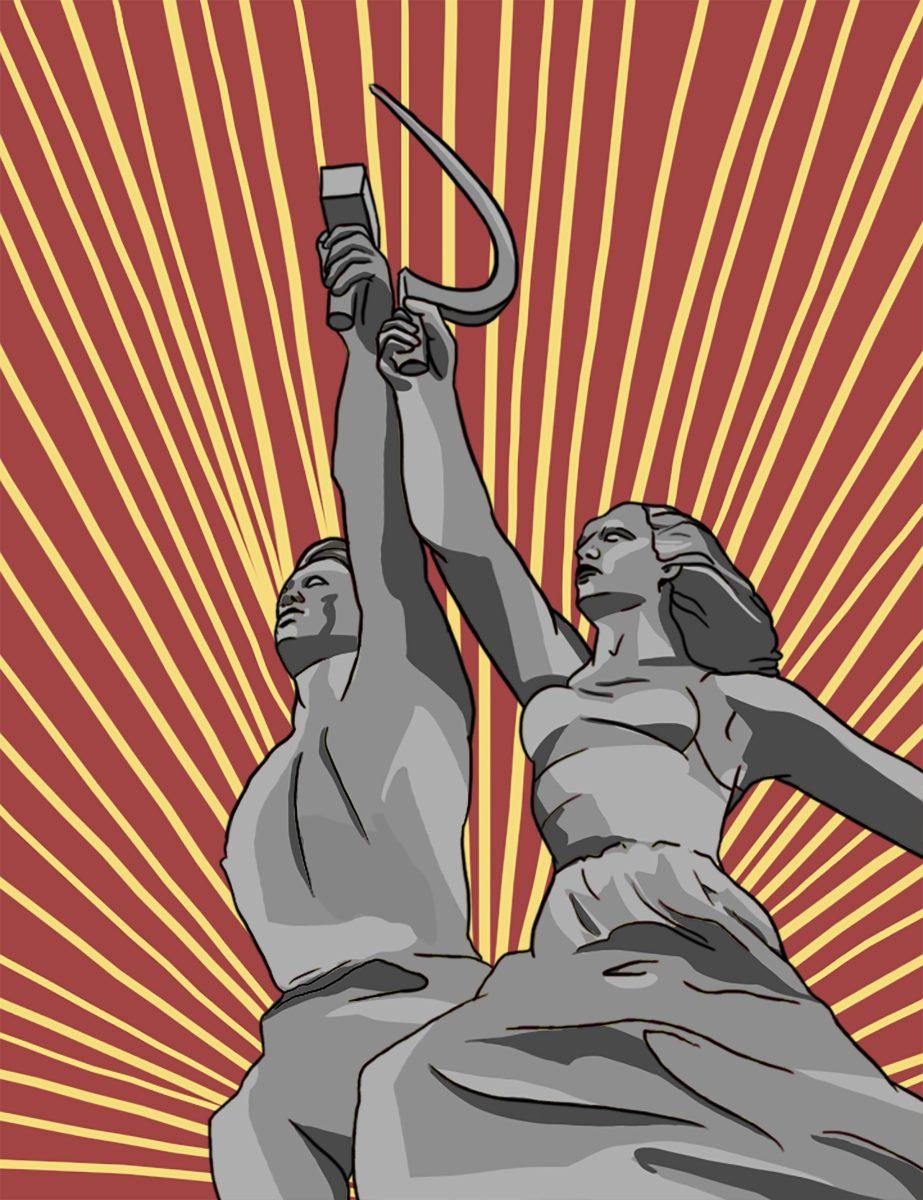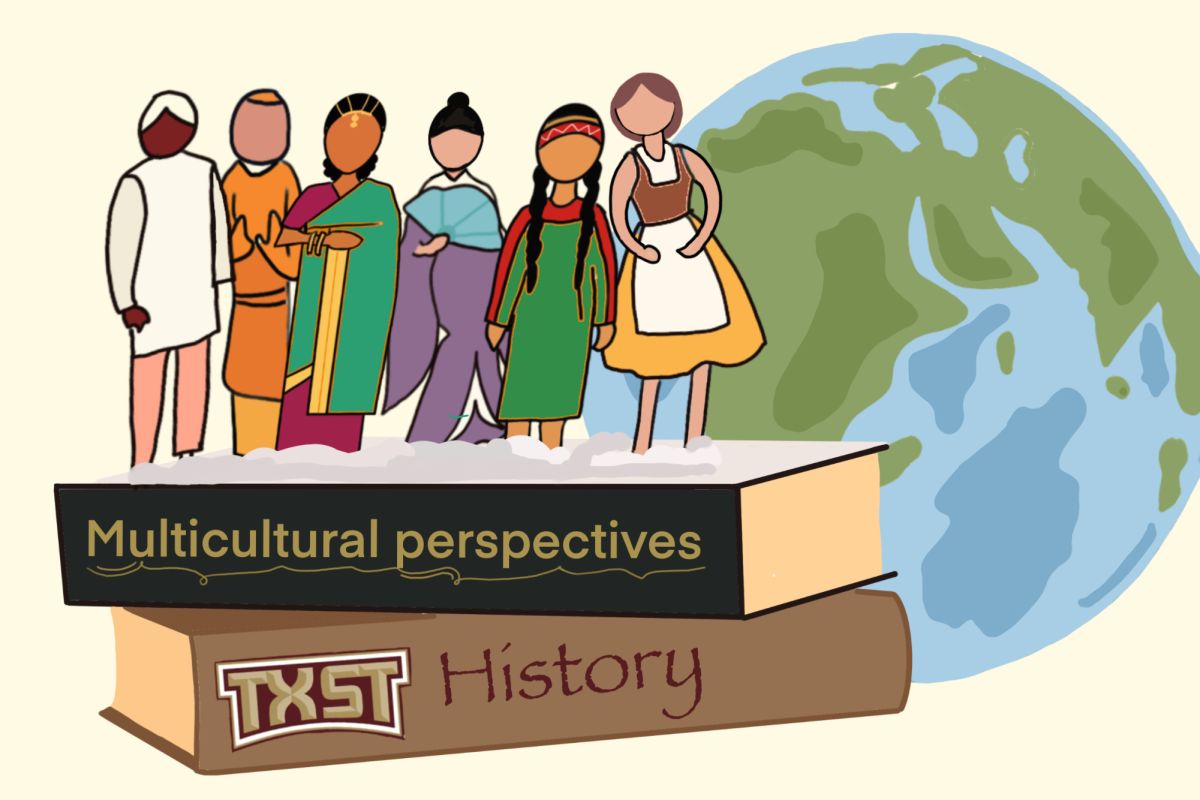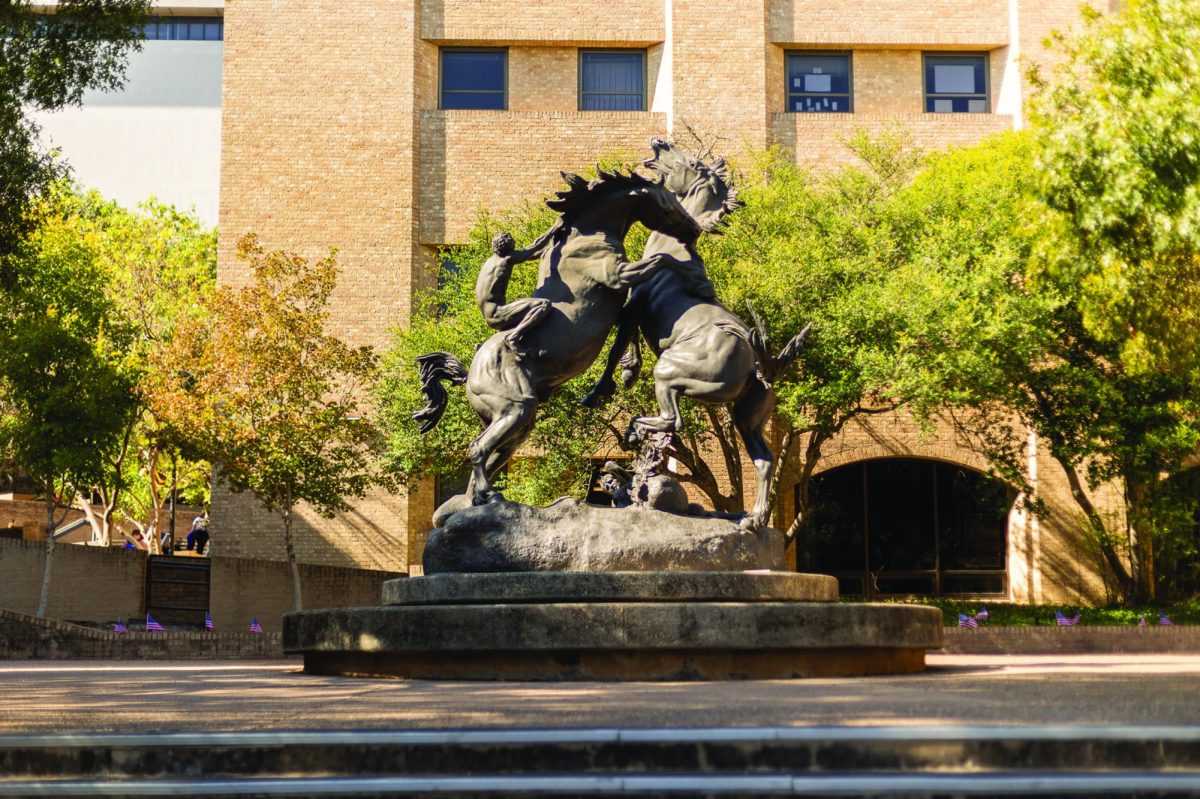On May 27th, in perfect Austin fashion, Alamo Drafthouse at The Ritz showcased what it calls “one of the most immersive and rarefied experiences in the history of cinema.”
Andrei Tarkovsky’s 1979 masterpiece, “Stalker,” is perhaps the greatest film you have never seen—like “The Wizard of Oz” if it were set in Chernobyl. However, seeing the Worker and Kolkhoz Woman statue moments before the film began is what moved me to tears.
The statue served as the logo for Mosfilm, the Soviet company responsible for distributing the film. It depicts a man and a woman respectively holding a hammer and sickle in the air, representing the optimism the Bolshevik revolution instilled in revolutionaries the world over. The statue presents the men and women of revolutionary Russia as equals, daringly venturing to a future in which communist ideology would liberate every worker in the world.
The Bolshevik Revolution sought to overthrow the oppressive Czarist regime with a radical democracy rooted in the union of the worker and the peasant. This new form of government would take the economy, industries, transportation, land and give it back to the people. The iconic figures associated with the revolution, such as Vladimir Lenin and Leon Trotsky, firmly believed this was the only way to achieve a lasting peace and avoid oppression.
As a Marxist myself, I believe the assumption in its entirety. The revolutionaries were also correct in thinking if communism were to thrive, the rest of the world’s countries would also have to undergo their own revolutions.
This did not happen.
Within a decade of the Bolsheviks storming of the Winter Palace, effectively turning Russia into the Soviet Union, Joseph Stalin, described by Lenin as “self-serving” and “authoritarian,” had consolidated power. The rest—which included prison camps, purges and starvation—is history.
In our current political climate, in which tyranny and nationalism are once more rearing their ugly heads, the “resistance” could learn a thing or two from the Bolsheviks.
Lenin’s form of international communism sought to usher in a new era for mankind. The revolutionaries did not want the rest of the 20th century to be defined by war between the old world’s empires, using peasants as their pawns. The Great War had already shown the world how frightening new weaponry could be. Instead, they had a desire to unite the world and perfect our newfound technologies—such as automation and flight—to do away with the exploitation of labor.
Much of our current mainstream activists simply seek to replace President Donald J. Trump with another member of the ruling capitalist class. Salvation will not be found in impeaching Trump or through the mid-term elections in November of 2018.
Likewise, stating, “don’t blame me, I voted for Hillary,” helps no one. Instead, salvation for our species, which faces a bevy of existential crises in the coming decades, lies in ridding ourselves of a suicidal economic ideology: capitalism. Trump’s election, Brexit, the tide of nationalism sweeping over Europe and the Syrian Civil War are a result of capitalism’s fundamental instability. It is prone to crisis, cannot exist without exploitation and thrives off conflict.
Let us learn from the Bolsheviks and replace the Winter Palace with the White House, the Czars with the Trumps, Russia with the world.
-Rudy Martinez is a philosophy junior.
Categories:
100 years onward, the Russian Revolution continues to inspire
June 19, 2017
Photo illustration by Haley Prieto
0
Donate to The University Star
Your donation will support the student journalists of Texas State University. Your contribution will allow us to purchase equipment and cover our annual website hosting costs.
More to Discover








